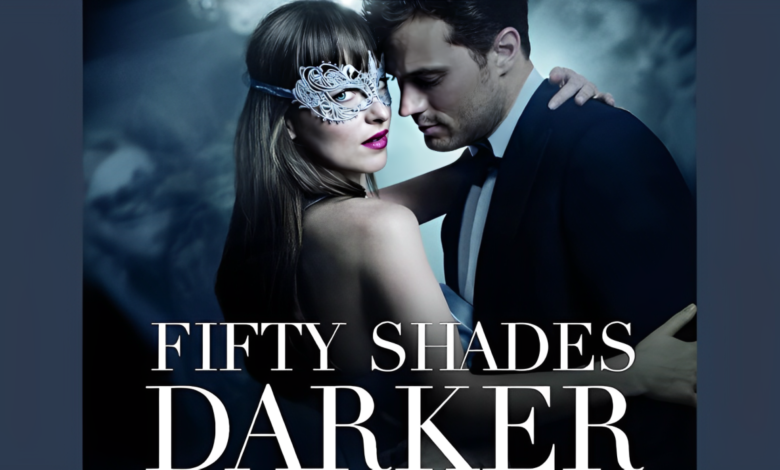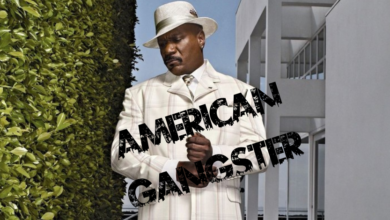Fifty Shades of Grey Filetype:Movie

Ever since Fifty Shades of Grey hit theaters in 2015, it’s been a lightning rod for debate, fascination, and, let’s be honest, a fair bit of giggling. I remember watching it with friends, popcorn in hand, wondering how a book so polarizing could become a global cinematic phenomenon. Whether you’re a die-hard fan or just curious about the hype, this film based on E.L. James’ steamy novel has layers worth exploring. In this article, we’ll unpack the movie’s allure, its cultural impact, and everything from its sultry soundtrack to its controversial themes. Let’s dive into the world of Christian Grey and Anastasia Steele, shall we?
Exploring the Semantically Relevant Terms of Fifty Shades of Grey
Before we get into the nitty-gritty, let’s set the stage with some context. The phrase “Fifty Shades of Grey filetype:movie” isn’t just a search query it’s a gateway to understanding a cultural juggernaut. Semantically, this film connects to concepts like romantic drama, erotic thriller, BDSM culture, and literary adaptations. These terms shape how we perceive the movie, tying it to broader cinematic trends and audience expectations. For me, it’s less about the shock value and more about how it sparked conversations about relationships and power dynamics.
Lexical Terms: The Language of Seduction
The movie’s lexicon is rich with words like desire, control, submission, passion, and intimacy. These aren’t just buzzwords; they’re the scaffolding of the story. When I first heard Christian Grey’s smooth-talking lines, I couldn’t help but chuckle at their intensity but they work. The dialogue, though sometimes criticized for being overly dramatic, taps into a primal vocabulary that resonates with viewers craving emotional stakes.
Hyponyms: Specific Shades of the Story
Drilling down, hyponyms like romantic subplot, BDSM relationship, or contract negotiation describe specific elements of the film. For instance, the BDSM contract scenes aren’t just spicy they’re a narrative device that explores trust and boundaries. I’ve always found these moments compelling because they force you to think about consent in a way mainstream movies rarely do.
Hypernyms: The Bigger Picture
Zooming out, Fifty Shades falls under broader categories like romance films, drama movies, or Hollywood blockbusters. It’s a reminder that, despite its unique flavor, the movie shares DNA with classics like Titanic or The Notebook. It’s big, emotional, and unapologetically indulgent qualities I secretly love in a good movie night pick.
Holonyms and Meronyms: The Whole and Its Parts
As a holonym, Fifty Shades is part of the Fifty Shades trilogy, a cinematic saga that includes Fifty Shades Darker and Fifty Shades Freed. Meronyms, or its components, include iconic scenes like the red room sequence, the elevator kiss, or the helicopter ride. Each part contributes to the film’s larger-than-life vibe. Honestly, the red room scenes always make me pause less for the scandal and more for how they’re shot with such meticulous care.
Synonyms and Antonyms: Defining the Vibe
Synonyms for the movie’s essence might include erotic romance, sensual drama, or provocative love story. Antonyms, on the other hand, could be family-friendly film or lighthearted comedy. The contrast highlights why Fifty Shades stands out it’s not trying to be safe or universally palatable, and I respect that boldness, even if it’s not everyone’s cup of tea.
Collocations: Words That Stick Together
Phrases like steamy romance, forbidden love, or intense chemistry naturally pair with Fifty Shades. These collocations pop up in reviews, fan discussions, and even my own chats with friends about the film. They capture the movie’s ability to blend raw emotion with high stakes, making every scene feel like it’s teetering on the edge.
Connotations: What Lies Beneath
The connotations of Fifty Shades are a mixed bag sensual, controversial, liberating for some, problematic for others. I’ve had debates with friends about whether the film glamorizes unhealthy dynamics or empowers personal exploration. It’s a movie that doesn’t let you stay neutral, and that raw energy is part of its charm.
Etymology: The Roots of the Title
The phrase “Fifty Shades of Grey” itself is intriguing. “Shades” suggests nuance and complexity, while “grey” evokes ambiguity perfect for a story about moral and emotional gray areas. The term “fifty” adds a sense of abundance, hinting at the multifaceted nature of Christian’s desires. I love how the title alone sets up the expectation of a layered narrative, even if the execution sometimes leans more theatrical than subtle.
Polysemy: Multiple Meanings
“Grey” in the title is polysemous, referring to Christian Grey’s surname, the color of ambiguity, and the murky ethics of his world. This multiplicity adds depth, making the movie more than just a romance it’s a study in contradictions. I often wonder how much of this was intentional versus a happy accident of naming.
Semantically Related Entities: The Broader Universe
Entities like E.L. James, Dakota Johnson, Jamie Dornan, Sam Taylor-Johnson (the director), and Universal Pictures are inseparable from the film. Beyond that, the movie ties to cultural phenomena like fanfiction origins (it began as Twilight fanfic!), book-to-screen adaptations, and the BDSM community. These connections ground the film in a larger context, which I find fascinating as someone who geeks out over pop culture history.
Common Attributes: What Defines the Movie
Common attributes include high production values, sensual cinematography, emotional intensity, and a chart-topping soundtrack (think Ellie Goulding’s “Love Me Like You Do”). These are the hallmarks fans rave about. I still get chills hearing that soundtrack it’s like the music carries half the movie’s emotional weight.
Rare Attributes: Less Obvious Traits
Less common traits include the film’s polarizing reception and its role in mainstreaming BDSM discussions. While romance movies often play it safe, Fifty Shades took risks that sparked global conversations. I remember reading think pieces about whether it was feminist or regressive rare for a blockbuster to stir such academic debate.
Unique Attributes: One of a Kind
What’s truly unique? The film’s origin as fanfiction-turned-cultural-phenomenon is unmatched. Its ability to turn a niche erotic novel into a mainstream movie franchise is something I doubt we’ll see again. It’s a testament to the power of fandom, and as someone who’s dabbled in fanfic, I find that origin story endlessly inspiring.
Why Fifty Shades of Grey Resonates: A Cultural Lens
The Appeal of Forbidden Romance
At its core, Fifty Shades is about a forbidden love that pushes boundaries. The dynamic between Christian and Ana feels dangerous yet magnetic, a trope that’s worked since Romeo and Juliet. I’ve always thought the movie’s strength lies in how it makes you root for a messy, complicated relationship, even when you’re questioning it.
Controversy and Criticism
Not everyone loves Fifty Shades. Critics have called it glorifying abuse or poorly scripted, while fans argue it’s empowering and authentic. I see both sides some scenes feel overly dramatized, but others capture raw vulnerability. The controversy only adds to its allure, making it a movie you have to have an opinion on.
The Soundtrack: A Character in Itself
The music is a standout, with tracks like The Weeknd’s “Earned It” setting a sultry tone. I’ve had that playlist on repeat during late-night drives it’s like the movie’s soul in audio form. The soundtrack’s success (it was Grammy-nominated!) shows how integral it was to the film’s identity.
Cinematic Craftsmanship
From the lush Seattle skyline shots to the intimate lighting of the red room, the cinematography is undeniably gorgeous. Director Sam Taylor-Johnson brought an artistic touch that elevated the material. I’m no film buff, but even I noticed how every frame feels deliberate, almost painterly.
Conclusion: Why Fifty Shades of Grey Still Matters
Love it or hate it, Fifty Shades of Grey is more than just a movie it’s a cultural touchstone. It brought BDSM into mainstream conversations, challenged cinematic norms, and proved that fanfiction can conquer the box office. For me, it’s a guilty pleasure that sparks curiosity about human desire and connection. Whether you’re drawn to the romance, the controversy, or just Jamie Dornan’s smolder, there’s no denying its impact. So, grab some wine, dim the lights, and give it a watch. You might just find yourself swept up in its fifty shades of allure.
Frequently Asked Questions About Fifty Shades of Grey (Movie)
What is Fifty Shades of Grey about?
It’s a romantic drama following Anastasia Steele, a shy college student, and Christian Grey, a wealthy businessman with a penchant for BDSM. Their relationship explores themes of love, control, and personal boundaries. Think intense chemistry with a side of moral ambiguity.
Is the movie appropriate for all audiences?
Nope! Rated R for explicit content, it’s meant for mature audiences. If you’re looking for a family-friendly flick, this isn’t it. I’d recommend watching it solo or with friends who can handle the heat.
How faithful is the movie to the book?
It follows the novel closely but softens some of the book’s more explicit scenes. Fans of the book might miss certain details, but I found the adaptation captured the story’s essence, even if it dialed back the intensity for mainstream appeal.
Why was Fifty Shades so controversial?
The film’s depiction of BDSM and power dynamics sparked debates about consent and healthy relationships. Some saw it as empowering; others felt it romanticized toxic behavior. I think it’s a mix flawed but thought-provoking.
Are the sequels worth watching?
Fifty Shades Darker and Fifty Shades Freed continue Ana and Christian’s story, diving deeper into their emotional and personal growth. They’re not as iconic as the first but still deliver drama and romance. I enjoyed them for the closure they provide.
Where can I watch Fifty Shades of Grey?
As of May 2025, it’s available on streaming platforms like Netflix, Amazon Prime, or Peacock, depending on your region. You can also rent or buy it on iTunes or Google Play. Check your local listings, as availability shifts.
